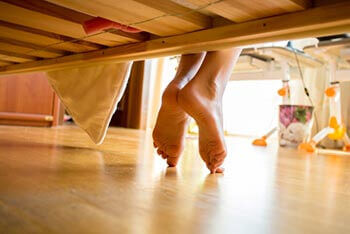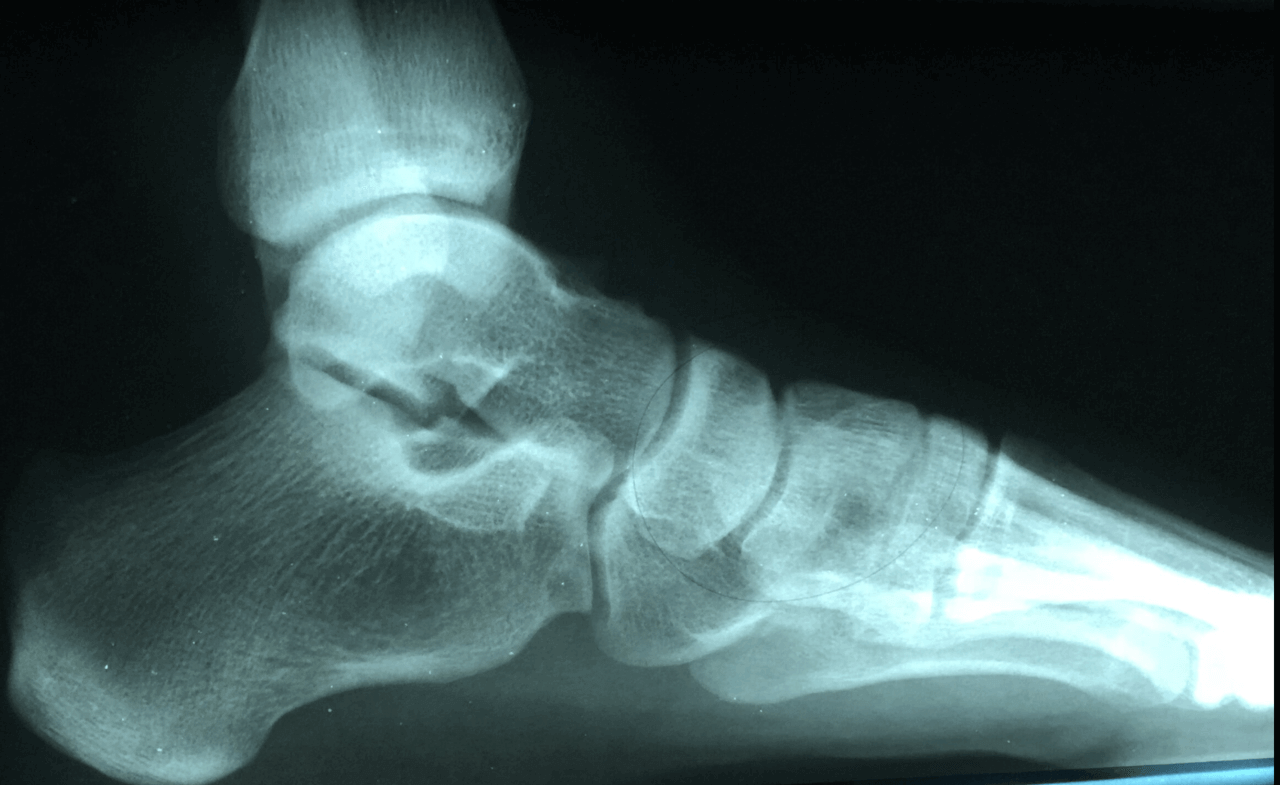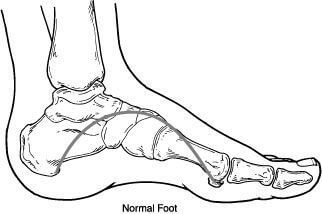foot pain
Displaying items by tag: foot pain
Dr. Brandon Nelson, A Board Certified Physician & Surgeon, Discusses Heel Pain, Sore Heels and Heel Pain Treatment

Heel pain can have many causes and can be extremely challenging for all patients. Not all sore heels are caused by plantar fasciitis and it is important to understand the underlying cause. Identifying the underlying cause will help to assure patients get the best treatment options. Even with many other causes of a severe heel pain, the number one cause continues to be plantar fasciitis.
Plantar fasciitis is basically an inflammatory process of the main supporting network of the foot. The primary cause of inflammation seems to be overuse and repetitive stress. The plantar fascia in general has a relatively poor blood supply and this can lead to chronic inflammation. Once we see chronic inflammation set in it can become extremely difficult to reduce pain and resolve one's heel pain.
Heel pain treatment options are vast. It really boils down to what the primary cause of the heel pain was and the activity level of the patient. I like to break it down to foot structure and rear foot pathologies. What I mean by foot structure is does the patient have a high arched foot or a low arched foot. Is there a lot of pronation that occurs with ambulating or overloading of the foot? Rear foot pathology can have a large effect on heel pain. Is there a tight calf muscle or is there a dysfunctional supporting tendon? The best long term outcome and shortest course to a pain free heel is to appreciate the deforming forces.
If you have severe heel pain or pain under your heel or even pain with running I can help! Give us a call at 425-391-8666 or make an appointment online today.
Sincerely,
Dr. Brandon Nelson, Board-Certified Foot and Ankle Physician and Surgeon, Discusses Heel pain and Plantar Fasciitis

There are quite a few causes of heel pain of heel pain and it can vary by age. We tend to break it up by pediatric meaning anybody less than 18 and adult heel pain anybody over 18. Regardless of the age and the patient heel pain can be extremely challenging and very painful. We see quite a few adults and children that are highly athletic and struggling with resolving their heel pain.
Heel pain and children is typically sourced to a disorder called calcaneal apophysitis. This is a condition where the growth plate of the heel is affected. Often times with young man this occurs between the ages of 14 and 16 and for young limited between the ages of 12 and 14. We see a high correlation with sport activities especially cleated sports. It is important to have an x-ray and follow-up with the foot and ankle physician in order to evaluate the other underlying causes.
Adults tend to have pain that occurs in the morning especially when getting out of bed or after activities. We see the majority of people have often increased their exercise routine or started a new activity. The #1 cause of heel pain and adults remains plantar fasciitis. The plantar fascia is the main supporting network of the foot and can become tired and worn out with age. Again it is important to seek help from a foot and ankle physician to determine whether or not this is the underlying cause.
Heel pain in both pediatrics and adults is highly treatable and early intervention is better. The majority of these causes can be distinguished of the first visit and felt can be implemented immediately. If you’re having heel pain please make an appointment today and I can help.
Sincerely Dr. Brandon Nelson
Board-Certified Foot and Ankle Physician and SurgeonDr Brandon Nelson, A Board-Certified Physician and Surgeon, Discusses Ball of Foot Pain

Ball of foot pain usually refers to pain in one’s feet right before or near where the toes start. This is a common area to experience pain and can be attributed to quite a few pathologies. Typically, we see certain foot structures that are associated with ball of foot pain, and these include high arched feet or a foot with a bunion deformity. These foot types can develop to two most common forefoot pathologies which are capsulitis or neuritis.
Capsulitis or metatarsalgia can create pain in the ball of one’s foot especially with activities. Most people that have capsulitis will see some swelling and sharp or a bruised type of sensation. It appears to be most common in the 2nd metatarsal and has a slow progression to worsening symptoms. Shoe gear usually makes it feel better and often there is some instability in the foot itself.
Neuritis or neuromas are often isolated to the 3rd interspace of the foot. We usually see this more often in females as opposed to males. Typically, it will be a burning or tingling type feeling. Shoes often exasperate the symptoms and foot structure does not usually have much of an influence on this pathology.
There are many different techniques to diagnosis and treat capsulitis, metatarsalgia or neuromas. It is important to obtain and x-ray and a thorough evaluation of the foot itself. There are a few instances where more advanced imaging like an MRI can provide some value. Treatment for either pathology is conservative in most cases and has a high resolution rate.
If you are suffering from ball of foot pain, make an appointment today and I will help you get back on your feet! 425-391-8666
Dr Brandon Nelson, a Board Certified Physician and Surgeon, Discusses Numbness and Tingling of the Foot

Burning pain in the feet can be quite common for diabetics or people with what is called neuropathy. This is a condition that occurs when our nerves have some dysfunction. There are quite a few causes of neuropathy but the most common is diabetes. Diabetes can result in high levels of sugar in our blood that then causes irritation or damage to our nerves. The nerves involved are usually the nerves in our hands or feet, the peripheral parts of our body, hence the term peripheral neuropathy.
Tingling is another sign or peripheral neuropathy. Often times it feels similar to hitting your funny bone and can progress as time goes on. I recommend anybody with these symptoms should be evaluated and tested for nerve problems. A test I often order is called EMG/NCVs. These test will allow one to see if the numbness or tingling is coming from your nerves.
Treatment can usually begin right away and have dramatic effects. I like to use an FDA approved laser, that has zero side effects, in combination with a nerve supplement and infra-red light. I have had patients experience 80-90% improvement in symptoms. If you are suffering from neuropathy, fibromyalgia or burning and tingling in the feet we can help.
Give us a call today at 425-391-8666 or make an appointment online.
Dr Timothy Young Talks About Tight Calves and Foot Problems

Dr Timothy Young Talks About Tight Calves and Foot Problems
As mentioned, the mechanical load on the foot from the calf and ultimately the Achilles is tremendous. So, with equinus ( a tight calve and or Achilles) there are many problems. Think of a woman who wears high heel shoes every day for many years and over time the calf gets less flexible. Now with that tight calf, her gait has changed. As she walks, with each step going forward that tight calf pulls, and her heel comes off the ground early. Early heel off with gait leads to early transfer of weight and force to the front of the foot. Over time, this extra pressure on the front of the foot can cause problems. This is like the childhood toewalker, but with adult body size and weight.
If you are experiencing any foot or ankle pain, give us a call today at 425-391-8666 or make an appointment online.
Exercises and Activities After Foot Problem or Injury

Dr Timothy Young discusses how to resume exercise and sports
In some cases it is possible to return to exercise and normal activities fairly soon after an injury or foot/ankle problem. With many acute injuries it is necessary to wait 3–4 weeks or longer, before attempting to return to activity. Depending upon the problem and level of recovery it may be necessary to wait until there is significant progress with the healing and recovery.
Pain is the key. Use pain as your guideline. Sometimes our patients will not know if they are okay with their activity level or exercises until later that day or even the following day. For example let's say you are a "walker" who would do 3-5 miles "preinjury" and you decide to return to your walking. That day you're fine but the next day may be telling, you can tell if you did too much too soon. In this case you know it is too soon to return to activity and you have to give it more time, possibly 1 week or longer. Listen to your body, and let pain help guide you.
Start slowly! After a foot problem or injury when you are ready to start resuming some activity, always start at a reduced level. For example if you typically walk 3–5 miles then try walking just 1 mile when you first return to activity. Do this for the first week and again use pain as your guideline, if all goes well then add a half mile the next week and continue that pattern.
Consider crosstraining: Aqua jogging and a stationary bike are often ways that you can do exercises without any impact. When using the stationary bike it is often necessary to use your heel and not the front of your foot on the injured side.
Use taping and braces: We have handouts on foot and ankle taping (KT tape). Taping and braces often allow you to get back to activity sooner than you would otherwise. Often you don't have to tape every day, just on those days were you will be on your foot much more or when you are doing weigh bearing exercises.



